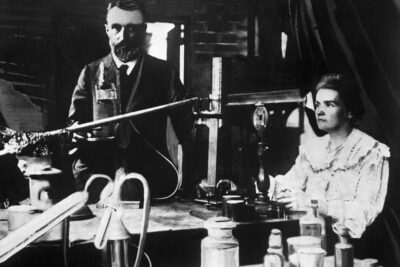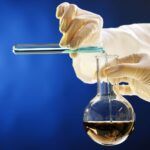
These are images of famous chemists or other scientists who made significant contributions to the field of chemistry. Pictures containing multiple famous chemists appear first.
- First Solvay Conference
- Alfred Bernhard Nobel
- Curie Lab
- Curie Women
- J. J. Thomson and Ernest Rutherford
- Lavoisier
- Emil Abderhalden
- Richard Abegg
- Svante A. Arrhenius
- Francis W. Aston
- Amedeo Avogadro
- Adolf von Baeyer
- Wilson 'Snowflake' Bentley
- Friedrich Bergius
- Karl Bosch
- Eduard Buchner
- Robert Wilhelm Bunsen
- George Washington Carver
- De Chancourtois
- Marie Curie
- Marie Curie
- Marie Curie
- Marie Curie
- Pierre Curie
- John Dalton
- Sir Humphry Davy
- Sir Humphry Davy
- Sir Humphry Davy
- Fausto D'Elhuyar
- Juan Jose D'Elhuyar
- Albert Einstein
- Einstein's Tongue
- Albert Einstein
- Rosalind Franklin
- Mae Jemison
- Gilbert N. Lewis
- Shannon Lucid
- Lise Meitner
- Dmitri Mendeleev
- Dmitri Mendeleyev
- Dmitri Mendeleev
- Julius Lothar Meyer
- Robert Millikan
- Gaylord Nelson
- Linus Pauling
- Linus Pauling
- Wilhelm Conrad Roentgen
- Ernest Rutherford
- Ernest Rutherford
- Ernest Rutherford
- J.J. Thomson
- Sir Joseph John (J. J.) Thomson
- Johannes Diderik van der Waals
- Tuan Vo-Dinh
- James Walker
First Solvay Conference
First Solvay Conference (1911), Marie Curie (seated, 2nd from right) confers with Henri Poincaré. Standing, 4th from right, Ernest Rutherford; 2nd from right, Albert Einstein; far right, Paul Langevin.
Benjamin Couprie/Wikimedia Commons/CC by 1.0
Seated (L-R): Walther Nernst, Marcel Brillouin, Ernest Solvay, Hendrik Lorentz, Emil Warburg, Jean Baptiste Perrin, Wilhelm Wien, Marie Curie, Henri Poincaré.
Lectura relacionada: Qué Es una Constante Experimental?
Qué Es una Constante Experimental?Standing (L-R): Robert Goldschmidt, Max Planck, Heinrich Rubens, Arnold Sommerfeld, Frederick Lindemann, Maurice de Broglie, Martin Knudsen, Friedrich Hasenöhrl, Georges Hostelet, Edouard Herzen, James Hopwood Jeans, Ernest Rutherford, Heike Kamerlingh Onnes, Albert Einstein, Paul Langevin.
Alfred Bernhard Nobel
Chemist and inventor of dynamite. Creator of the Nobel Foundation.
Gösta Florman/Wikimedia Commons/CC by 1.0
Alfred Nobel invented dynamite.
Lectura relacionada: 10 Reacciones Químicas Sorprendentes
10 Reacciones Químicas Sorprendentes
Curie Lab
Pierre Curie, Pierre's assistant, Petit, and Marie Curie.
Public Domain/Wikimedia Commons/CC by 1.0
Marie and Pierre Curie discovered the radioactive elements polonium and radium.
Lectura relacionada:
 Conozca el pH de los Productos Químicos Comunes
Conozca el pH de los Productos Químicos ComunesCurie Women
Marie Curie with Meloney, Irène, and Eve shortly after their arrival in the United States.
Public Domain/Wikimedia Commons/CC by 1.0
J. J. Thomson and Ernest Rutherford
J. J. Thomson and Ernest Rutherford in the 1930s.
Public Domain/Wikimedia Commons/CC by 1.0
Lavoisier
Portrait of Monsieur Lavoisier and his Wife (1788). Oil on canvas. 259.7 x 196 cm. The Metropolitan Museum of Art, New York.
Jacques-Louis David/Public Domain/Wikimedia Commons/CC by 1.0
Antoine Lavoisier is often considered to be the Father of Chemistry.
Emil Abderhalden
Emil Abderhalden was a famous Swiss biochemist and physiologist.
George Grantham Bain Collection (Library of Congress)/Public Domain/Wikimedia Commons/CC by 1.0
Richard Abegg
Richard Wilhelm Heinrich Abegg was the German chemist who described valence theory.
Public Domain/Wikimedia Commons/CC by 1.0
Svante A. Arrhenius
Francis W. Aston
Amedeo Avogadro
Avogadro formulated Avogadro's law. Avogadro's number is named in honor of him.
Adolf von Baeyer
Wilson 'Snowflake' Bentley
Wilson 'Snowflake' Bentley was a farmer and hobbyist snow crystal photomicrographer. He took over 5000 images of snowflakes.
Public Domain/Wikimedia Commons/CC by 1.0
Friedrich Bergius
Karl Bosch
Eduard Buchner
Robert Wilhelm Bunsen
Pioneer of spectroscopy and inventor of the bunsen burner.
F. J. Moore, 'A History of Chemistry' c.1918
George Washington Carver at work in his lab.
USDA History Collection, Special Collections, National Agricultural Library/Public Domain
George Washington Carver
George Washington Carver was an American inventor, scientist, and educator.
Frances Benjamin Johnston/Wikimedia Commons/CC by 1.0
De Chancourtois
De Chancourtois was a French geologist who devised a periodic table of the elements in which the elements were grouped according to periodic properties and ordered according to increasing atomic weight.
Unknown/Wikimedia Commons/CC by 1.0
Marie Curie
Marie Curie driving a radiology car in 1917.
Unknown/Wikimedia Commons/CC by 1.0
Marie Curie
Marie Curie
Marie Curie
Marie Sklodowska, before she moved to Paris.
Unknown/Wikimedia Commons/CC by 1.0
Pierre Curie
John Dalton
John Dalton (September 6, 1766 – July 27, 1844) was an English chemist and physicist. Dalton is best known for his work on atomic theory and research into color blindness.
William Henry Worthington/Wikimedia Commons/CC by 1.0
Sir Humphry Davy
Sir Humphry Davy (17 December 1778 29 May 1829) was a British chemist and physicist. He discovered several alkali and alkaline earth metals and investigated the properties of the elements chlorine and iodine.
Unknown/Wikimedia Commons/CC by 1.0
Sir Humphry Davy
Sir Humphry Davy (17 December 1778 29 May 1829) was a British chemist and physicist. He discovered several alkali and alkaline earth metals and investigated the properties of the elements chlorine and iodine.
The Life of Sir Humphry Davy by John A. Paris, London: Colburn and Bentley, 1831.
This engraving is circa 1830, based on a portrait by Sir Thomas Lawrence (1769 - 1830).
Sir Humphry Davy
Fausto D'Elhuyar
Fausto D'Elhuyar (1755 - 1833) Co-discoverer of tungsten.
Unknown/Wikimedia Commons/CC by 1.0
Juan Jose D'Elhuyar
Famous Chemists Juan Jose D'Elhuyar (1754 - 1796) co-discoverer of tungsten.
Unknown/Wikimedia Commons/CC by 1.0
Albert Einstein
This photo was inscribed "To Linus Pauling" from Albert Einstein (1958).
Unknown/Wikimedia Commons/CC by 1.0
Einstein's Tongue
Famous Scientists Silly (and famous) picture of Einstein sticking his tongue out.
Public Domain
Albert Einstein
Famous Scientists Photograph of Albert Einstein (1947).
Library of Congress, Photograph by Oren Jack Turner, Princeton, N.J.
Rosalind Franklin
Rosalind Franklin used x-ray crystallography to see the structure of DNA and the tobacco mosaic virus.
I believe this is a photo of a portrait in the National Portait Gallery in London.
Mae Jemison
Mae Jemison is a retired medical doctor and American astronaut. In 1992, she became the first black woman in space. She holds a degree in chemical engineering from Stanford and a degree in medicine from Cornell.
NASA
Gilbert N. Lewis
Among other contributions to chemistry, Gilbert N. Lewis isolated heavy water and brought E. O. Lawrence to Berkeley.
Lawrence Berkeley National Laboratory
Shannon Lucid
Shannon Lucid as an American biochemist and US astronaut. For a while, she held the American record for the most time in space. She studies the effects of space on human health, often using her own body as a test subject.
NASA
Lise Meitner
Lise Meitner (November 17, 1878 October 27, 1968) was an Austrian/Swedish physicist who studied radioactivity and nuclear physics. She was part of the team that discovered nuclear fission, for which Otto Hahn received a Nobel Prize.
Dmitri Mendeleev
Dmitri Mendeleev is credited with developing the first periodic table of the elements. There were earlier tables, but Mendeleev's table showed the elements exhibited a periodicity of properties when they were arranged according to their atomic weight.
Dmitri Mendeleyev
Dmitri Mendeleyev (or Dmitri Mendeleev) is credited with developing one of the first periodic tables that organized the elements according to increasing atomic weight and accounted for trends in their chemical and physical properties.
public domain
Dmitri Mendeleev
Dmitri Mendeleev (1834 - 1907).
Library of Congress
Julius Lothar Meyer
Julius Lothar Meyer was a German chemist and contemporary of Dmitri Mendeleev. The scientists independently developed the periodic table in which the elements were ordered according to increasing atomic weight and grouped according to periodic properties.
19th century photograph of Julius Lothar Meyer.
Robert Millikan
Famous Scientists Robert Millikan is famous for his measurement of the charge on the electron and his work on the photoelectric effect. Millikan received the 1923 Nobel Prize in Physics.
photograph by Clark Millikan (1891)
Gaylord Nelson
Gaylord Anton Nelson (June 4, 1916 – July 3, 2005) was an American Democratic politician from Wisconsin. He is best remembered for founding Earth Day and for calling for Congressional hearings on the safety of combined oral contraceptive pills.
US Congress
Linus Pauling
Linus Pauling - Age 7. Linus Pauling lived in the rural town of Condon, Oregon.
Linus Pauling
Linus Pauling - age 17 (1918).
Wilhelm Conrad Roentgen
Wilhelm Conrad Röntgen or Roentgen (1845-1923), discoverer of x-rays.
Universität Gießen
Ernest Rutherford
Ernest Rutherford.
Ernest Rutherford
Ernest Rutherford, oil painting by J. Dunn, 1932.
J. Dunn, National Portrait Gallery, London
Ernest Rutherford
Ernest Rutherford in academic garb.
Edgar Fahs Smith Memorial Collection, University of Pennsylvania Library
J.J. Thomson
J.J. Thomson.
Chemical Heritage Foundation Collections
Sir Joseph John (J. J.) Thomson
Sir Joseph John (J. J.) Thomson.
Johannes Diderik van der Waals
Famous Chemists Johannes Diderik van der Waals (1837 - 1923).
Tuan Vo-Dinh
Famous Chemists - Tuan Vo-Dinh Professor Dr. Tuan Vo-Dinh is famous chemist and inventor who specializes in the field of photonics.
Image courtesy of Dr. Tuan Vo-Dinh
James Walker
Famous Chemists James Walker (1863 - 1935).









